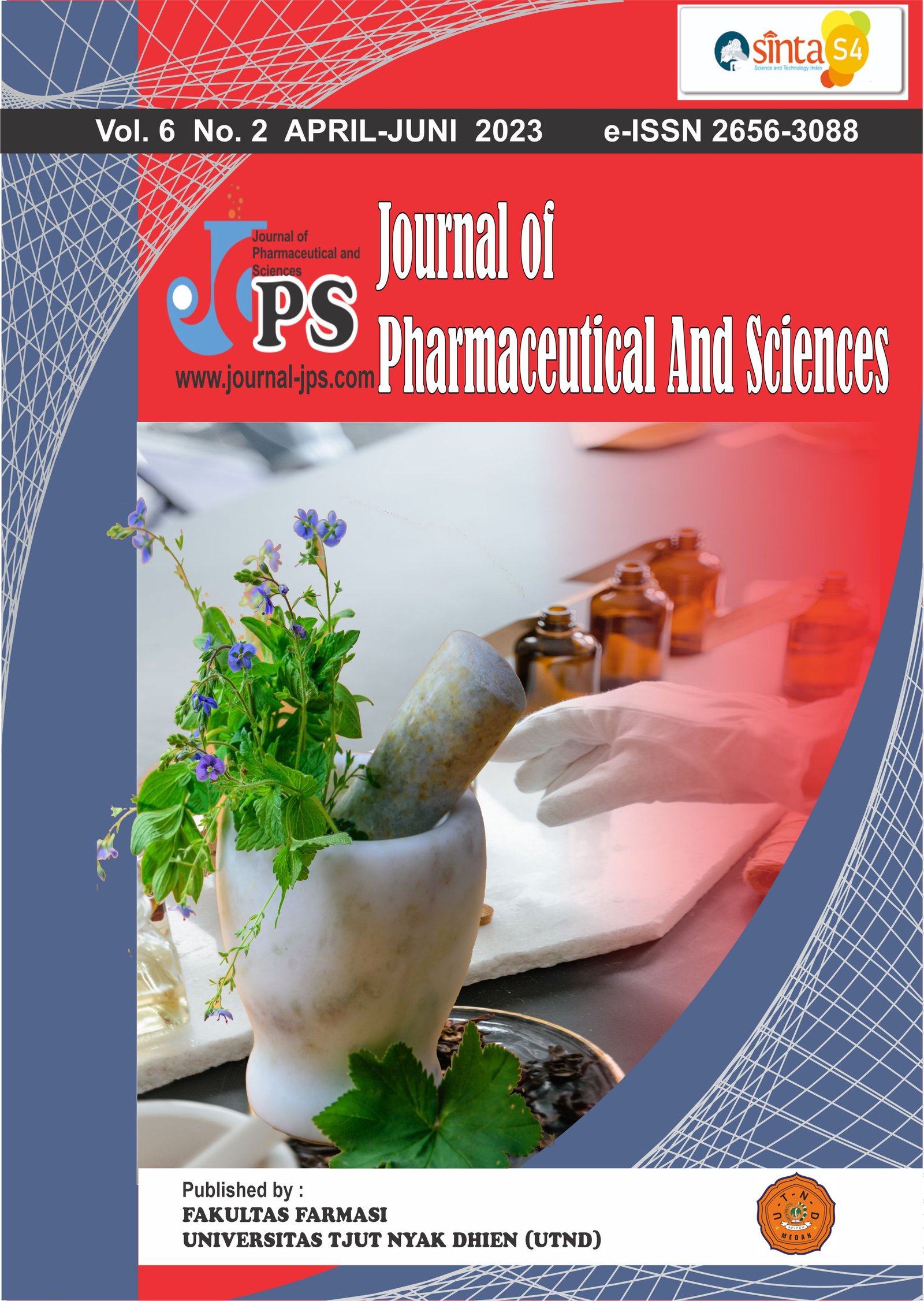Formulation Of Lipstick Using Natural Dye Copigmentation Of Annatto (Bixa orellana L.) Seeds With Red Yeast Rice As Dyes
Main Article Content
Page: 521-528
Abstract
Background; appearance is the most common thing to pay attention to, especially among women. Cosmetics are preparations that can improve appearance, one of which is lipstick. Lipstick has the main components, namely wax, oil and dye. One of the natural dyes that can be used as cosmetic dyes are annatto (Bixa orellana L.) and red yeast rice seeds. However, the use of natural dyes in cosmetics has an unstable color. The purpose of this study was to stabilize the dye from annatto (Bixa orellana L.) with red yeast rice seeds using the copigmentation method. Methods; in this study, a maceration process was carried out to obtain extracts from annatto (Bixa orellana L.) and red yeast rice seeds with a ratio of 1:10 (w/v). Then mixed with the thick extract of annatto (Bixa orellana L.) with red yeast rice as a coloring agent, formulated in a ratio of 1:1, 1:2, 2:1 and 2:2. Then the physical quality test of the lipstick preparation was carried out which included homogeneity test, melting point test, lipstick strength test, stability test, smear test, and irritation test. Result; the results showed that the Annatto (Bixa orellana L.) with red yeast rice in the form of copigmentation can be formulated into lipstick preparations with poor homogeneity results. All lipstick preparations meet the requirements of the melting point test, strength test, stability test, smear test, irritation test. The formula with a ratio of 1:2 (F2) is the most preferred preparation by volunteers because it has a good color, smell and texture.
Downloads
Article Details

This work is licensed under a Creative Commons Attribution-NonCommercial-ShareAlike 4.0 International License.
References
Chatham, L. A., Howard, J. E., & Juvik, J. A. (2020). A Natural Colorant System From Corn: Flavone-anthocyanin Copigmentation For Altered Hues And Improved Shelf Life. Food Chemistry. Hal. 9, 1-32.
Fatimah, & Jamailah. (2018). Pembuatan Sabun Padat Madu dengan Penambahan Ekstrak Kunyit (Curcuma domestica). Jurnal Teknologi Agro-Industri. Hal. 5, 90-100.
Hasim, Faridah, D. N., & Mithania, D. (2019). Penambahan Bekatul dan Angkak pada Produk Agar-agar sebagai Alternatif Cemilan Pengikat Kolesterol. Jurnal Mutu Pangan. Hal. 6, 85-90.
Klimek-Szczykutowicz, M., Szopa, A., & Ekiert, H. (2018). Chemical Composition Traditional And Professional Use In Medicine Application In Environmental Protection Position In Food And Cosmeticsindustries And Biotechnological Studies Of Nasturtium Officinale (Watercress). Fitoterapia. Hal. 299, 283-292.
Pratiwi, D., Nurmaliza, & Bakhtiar, T. (2020). Pemanfaatan Zat Warna Alami Dari Kunyit (Curcuma domestica Val) Dan Biji Coklat (Theobroma Cacao L) Pada Sediaan Lipstik. Global Conferences Series:Sciences and Technology. Hal. 5, 6-12.
Priatni, S., Damayanti, S., Saraswaty, V., Ratnaningrum, D., & Singgih, M. (2014). The Utilization of Solid Substrates on Monascus Fermentation for Anticholesterol Agent Production. Procedia Chemistry. Hal. 9, 34-39.
Putri, A. R., Tavita, G. E., & Muflihati. (2016). Ekstrak Biji Kesumba Keling (Bixa Orellana L.) Sebagai Pewarna Alami Kayu Sengon (Paraserianthes Falcataria L.). Hutan Lestari. Hal. 4, 306-313.
Risnawati, N., & Purba, D. (2013). Formulasi Lipstik Menggunakan Ekstrak Biji Coklat (Theobromacacao L.) Sebagai Pewarna. Journal of Pharmaceutics and Pharmacology. Hal. 1, 78-86.
Santi, R. N., M.Si, E. H., & Dr. Neneng Siti Silvi Ambarwati, M. (2020). Formulasi Dan Evaluasi Sediaan Kosmetik Pewarna Lipstik Dari Ekstrak Kulit Batang Secang (Caesalpinia Sappan L.). JTR-Jurnal Tata Rias. Hal. 10, 1-11.
Santoso, W. E., & Estiasih, T. (2014). Kopigmentasi Ubi Jalar Ungu (Ipomoea Batatas Var. Ayamurasaki) Dengan Kopigmen Na-Kaseinat Dan Protein Whey Serta Serta Stabilitasnya Terhadap Pemanasan. Pangan dan Agroindustri. Hal. 2, 121-127.
Simatupang, L. P. (2018). Formulasi Sediaan Lipstik Menggunakan Kombinasi Minyak Jarak Dan Minyak Kacang Tanah Sebagai Pelarut Zat Warna Red 7. Skripsi, Fakultas Farmasi Universitas Sumatera Utara. Hal. 30-43.
Souhoka, F. A., Hattu, N., & Huliselan, M. (2019). Uji Aktivitas Antioksidan Ekstrak Metanol Biji Kesumba Keling (Bixa orellana L). Indonesian Journal of Chemical Research. Hal. 7, 25-31.
Utami, D. P., Taurina, W., & Purwanti, N. U. (2017). Pembuatan Lipstik Ekstrak Etanol Biji Kesumba Keling (Bixa orellana L.) Dengan Penambahan Air Kapur 30 Persen. Skripsi, Fakultas Kedokteran Universitas Tanjungpura. Hal. 43-48.
Yatimah, Y. D. (2014). Analisa Cemaran Logam Berat Kadmium Dan Timbal Pada Beberapa Merek Lipstik Yang Beredar Di Daerah Ciputat Denganmenggunakan Spektrofotometri Serapan Atom (SSA). Skripsi, Fakultas Kedokteran Dan Ilmu Kesehatan UIN Syarif Hidayatullah Jakarta. 13, 25.
Yulyuswarni. (2018). Formulasi Ekstrak Kulit Buah Naga Merah (Hylocereus polyrhizus) Sebagai Pewarna Alami Dalam Sediaan Lipstik. Jurnal Analis Kesehatan. Hal. 7, 673-679.





